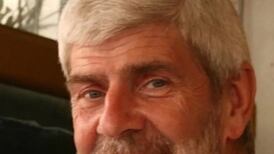John V. Lindsay, who died on December 19th aged 79, was one of the last of the breed of liberal Republicans in American politics. Mayor of New York City from 1965 to 1973, he was briefly, as a Democrat, a presidential contender in 1972.
John Lindsay presided over a time of union turmoil, rising crime and angry racial and political conflict in New York. He showed great physical courage in confronting rioting mobs in Harlem in 1967, but became involved in damaging confrontations with New York's teachers over "community control" of schools, and with the police over a proposed civilian review board. As a white Anglo-Saxon Protestant from an upper-class background, John Lindsay belonged to one of the smallest ethnic minorities in a city whose politics were largely defined by ethnicity, and that was bitterly divided in the 1960s between Jews and Catholics, and whites and blacks. Elected to his first term as mayor largely by middle-class voters, he ended up being re-elected largely with black and hispanic votes.
It was his misfortune to serve as mayor of America's biggest city at the height of the urban crisis brought on by the coincidence of racial conflict, labour unrest, rashly generous liberal reforms, fiscal improvidence and political confusion.
He won election with the help of a campaign in the friendly New York Herald Tribune calling it "a city in crisis", and in many ways he left it a city in crisis too. Yet in spite of numerous mistakes, he has come to be seen as one of New York's better mayors.
John Lindsay came from an upper-class family. His father was an investment banker and he was educated at the private boarding Buckley School, at St Paul's School, Concord, and at Yale. After serving briefly as a government lawyer in the Eisenhower administration, he was elected to Congress.
In spite of the twin handicaps of birth and liberalism, John Lindsay was elected mayor in 1965. On his first day in office the tough Irish labour boss, Mike Quill, brought the city's buses and subway trains to a halt. The strike was said to have been the "costliest and most paralysing" strike in American history. In 1968 the policemen went on a "sick-out", and the teachers and dustmen were on strike. In 1971, it was the turn of the bridge tenders, the sewage workers and the policemen again. Potentially most dangerous of all was the firemen's strike in 1973.
However, John Lindsay brought managerial modernity to New York's government. He reorganised it into eight "super-agencies" and shook up the ancient cosy ways of patronage and plunder. Yet it was in his day that New York's finances began to deteriorate, thanks to reckless short-term borrowing that brought the city to the brink of bankruptcy in the mid1970s.
His attempt to reform New York's once magnificent but already troubled, public school system turned out to be catastrophic. He brought in the Ford Foundation, to advise how to tackle racial problems in the schools. It recommended "community control", which meant handing over control of the teachers, two thirds of them Jewish, and their powerful union, to local boards of control. This led to angry confrontations and to a teachers' strike.
The mayor also instituted a civilian police review board which deeply alienated many of "New York's finest". He set up a commission to fight corruption, which found it was endemic and "indulged in to some degree by a sizeable majority of those on the force".
In 1969, he was re-elected thanks to the votes of the poor and disinherited blacks and Hispanics.
When he left office, it was widely assumed that he had a promising political career ahead of him. In fact, he disappeared almost totally from political sight.
In late 1971, he announced that he was becoming a Democrat - the opening move in a campaign for the presidency. The idea was that he would knock out George McGovern in the early primaries and challenge Richard Nixon in the November election. It didn't work out like that. He made little impact and withdrew after being badly beaten in the Wisconsin and Florida primaries.
John Lindsay returned to practising law in Manhattan, but even that was not a great success. He worked for two law firms, both of which were dissolved. His wealth as well as his health suffered. In May 1996, mayor Rudolph Giulani agreed to find him two city jobs because he was broke.
John Vliet Lindsay: born 1921; died, December 2000









